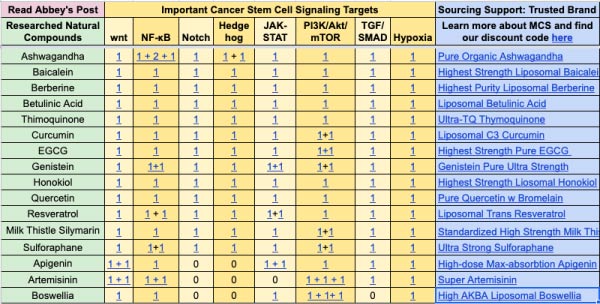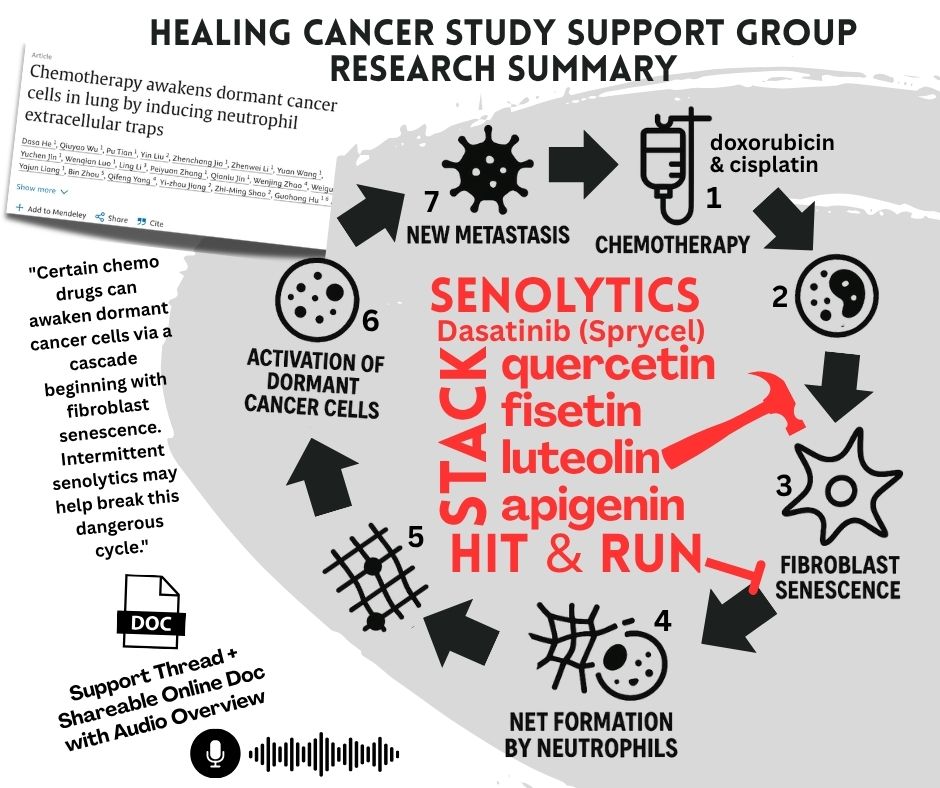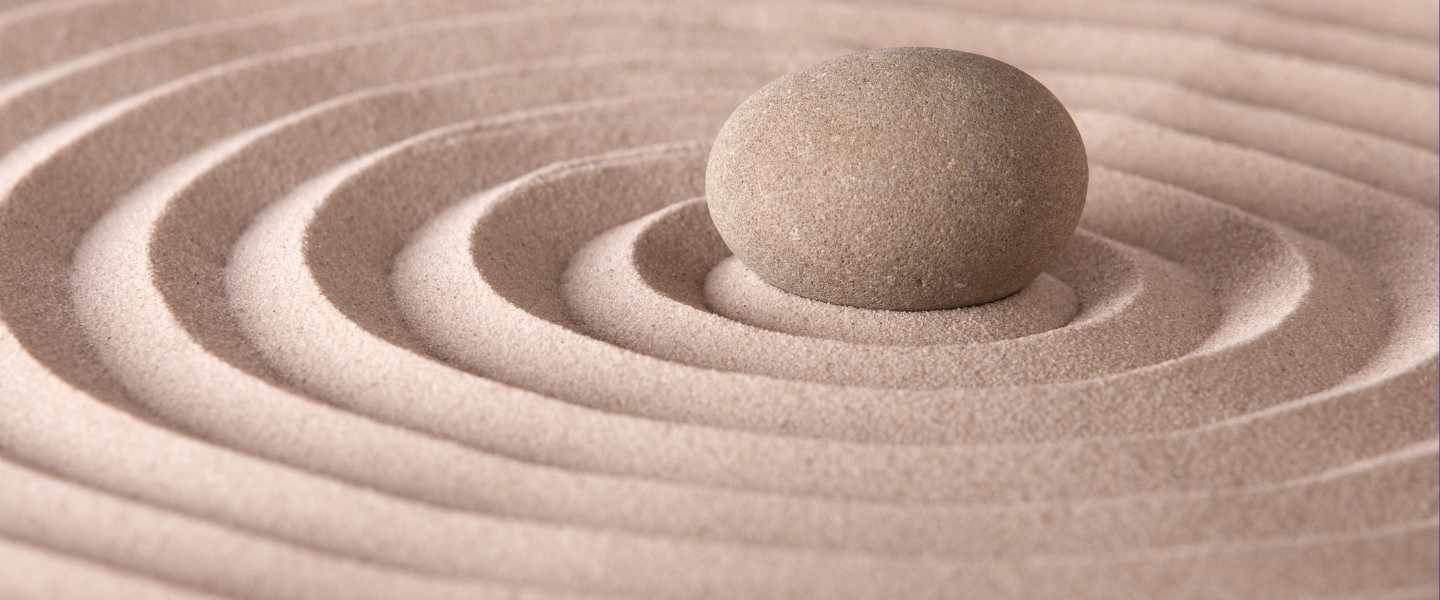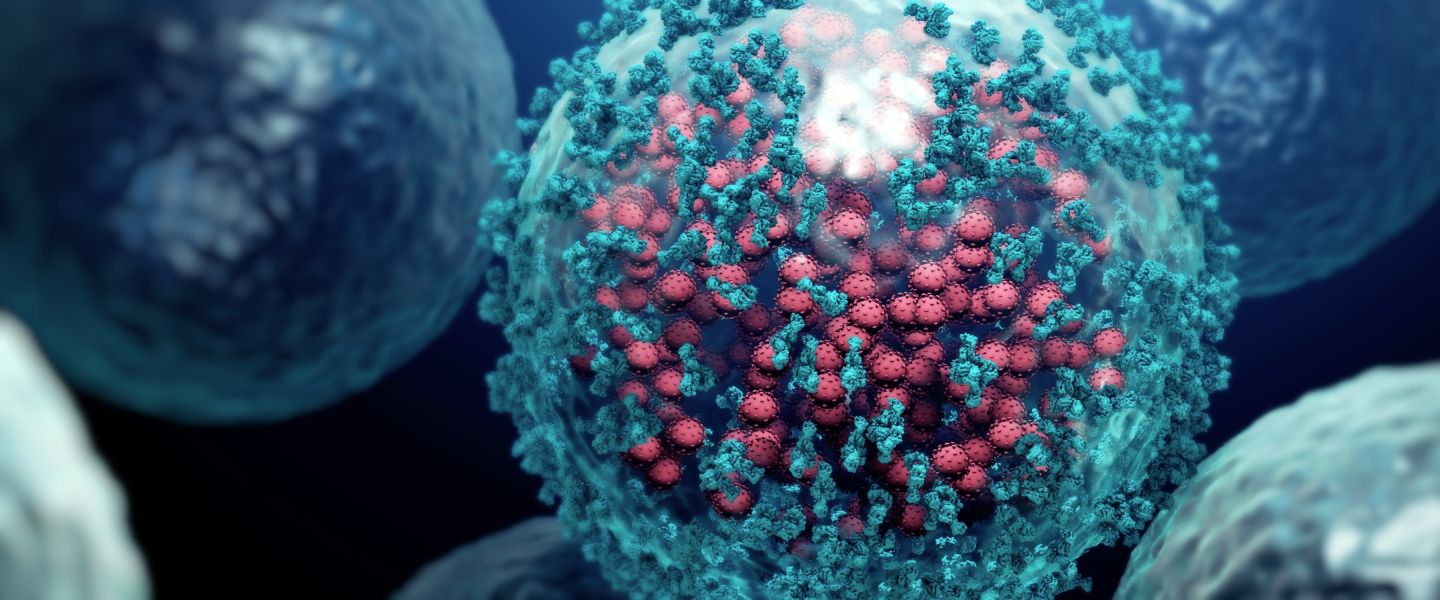SHARING / REPOSTING GUIDELINES: We're very happy to have posts/articles shared as direct links.
However, if you are replicating and re-posting information from this website or our posts, Abbey requests that you:
A) Only ever share articles in part (not in full). (eg. You can lift a paragraph as a way of introducing your readers to the topic) B) Be sure to always provide a direct link/URL back to the full original article here on the MyHealingCommunity.com website. Thanks in advance for your co-operation when sharing and re-posting any and all information that appears on this website.
Could compounds in natural supplements be the key to cancer treatment success?
What are cancer stem cells ?
Tumours have within their microenvironment a wide variety of cells and some of these are self-renewing, parent-like cells known as cancer stem cells. Cancer stem cells are the cells believed to be responsible for treatment failure, progression, metastasis and recurrence many months or even years after a patient experiences remission1. Simply type the words ‘cancer stem cells’ into PubMed and you will see over 37, 000 results for the past 5 years alone.
Does standard cancer treatment kill cancer stem cells?
Standard cancer therapies are usually effective at targeting the regular cancer cells in a tumour mass or in the blood, however, they are not effective against cancer stem cells. Cancer stem cells “display a high plasticity, which changes their phenotypic and functional appearance. Such changes are actually induced by chemo- and radio-therapeutics2." Dormancy and the ability to escape detection by the immune are features of many cancer stem cells. Sadly, it makes things difficult for us, because as standard of care patients, we are offered conventional cancer treatments that support the mutation and activity of cancer stem cells.
Avoiding relapse after cancer treatment.
Cancer stem cells have the capacity to mutate during treatment and post treatment can restore the tumor mass with an even more aggressive cancer cell type. A truly successful cancer therapy requires that both the tumor cells and the cancer stem cells be eliminated. The ability to target both cell types is at the forefront of cancer treatment research worldwide today.3
The cancer stem cell challenge in a nutshell.
There is an increased risk of having a more aggressive cancer stem cell population post-treatment. Cancer stem cells are not detectable by standard imaging or most biomarkers and are currently not being addressed by standard of care. It is simply not enough to eliminate the tumour cells. For long-term survival, cancer stem cells must also be eliminated. Achieving this could potentially eliminate the entire cancer cell population, greatly reducing the chances of recurrence, metastasis and death.
Most researched cancer stem cells targets.
The capacity for cancer stem cells to create and restore tumor mass, drive metastasis, trigger treatment relapse and resistance to conventional therapies has been well studied and attributed to the following factors4. 1) Pluripotent transcription factors, such as OCT4, Sox2, Nanog, KLF4, and MYC 2) Activation of inter-signalling pathways such as Wnt, NF-κB (nuclear factor-κB), Notch, Hedgehog, JAK-STAT (Janus kinase/signal transducers and activators of transcription), PI3K/AKT/mTOR (phosphoinositide 3-kinase/AKT/mammalian target of rapamycin), TGF (transforming growth factor)/SMAD, and PPAR. 3) Extracellular factors, such as vascular niches, hypoxia, tumor-associated macrophages, cancer-associated fibroblasts, cancer-associated mesenchymal stem cells, extracellular matrix, and exosomes.
Meanwhile, what can I do?
So far I have read the research being presented on the safe and accessible ‘non-patentable’ natural compounds that have the capacity to regulate and inhibit the above mentioned cancer stem cell pathways + hypoxia (table 1). I also looked into each compound's potential to support the work of standard of care chemotherapies and radiation without harming my healthy cells. (table 2). Each day I search the scientific journals for the research pertaining to ‘cancer stem cell pathways, hypoxia, chemotherapy resistance, radio-therapy resistance and the names of the natural compound presented in a bioavailable form. I use the MCS formulas range as my guide to trusted, accessible, pure, high strength and bioavailable anti-cancer compounds. See tables below.
Compounds in Natural Supplements that Target Cancer Stem Cell Pathways.
The number 1's are direct links to the research for that pathway and that particular compound. Access the Table here
Compounds in Natural Supplements for Supporting Cancer Treatment.
The number 1's are direct links to the research for that treatment and that particular compound. Access table 2 here . Note: Update: Gemcitabine was added 28th March

I chose MCS formulas as my guide because...
I trust their product for purity, strength and bioavailability. I admire the company's value, vision, and 5-star international service. You will find links to my personal choices to the right side of each cancer stem cell pathways table. You will learn more about MCS formulas, products, and the company values on each page of their website and on our trusted suppliers page, where you will find the MCS 5% discount code for members of the Healing Cancer Study Support Group. Note: Each of the MCS formulas liposomal products has a section at the bottom of the individual product's page that explains more about the neutrally charged liposomes delivery system and how that supports absorption.
News Update to this Post: July 24th 2025

Click this link to listen to a 12-minute engaging audio conversation about
how research is pinpointing the mechanisms by which bioavailable senolytics
may reduce chemoresistance by killing senolytic cancer cells.
The free and shareable source document for the above audio is here at this link.
Group members can ask questions that will feed back into the source doc here
Dosage: As far as dosage goes, this is very individual and will depend on many factors. Many of my choices are liposomal formulas, which could make them at six times more bioavailable than a non-liposomal formula.
Important Note: Phospholipids make up a large proportion of bile. About 95% of these phospholipids come from phosphatidylcholine. Sunflower lecithin is very high in phosphatidylcholine (which is a wonderful thing). The liposomal formulas are made using sunflower lecithin, so the increased phosphatidylcholine could increase bile production. If you have cancer in the liver or bile ducts, the use of liposomal formulas is worth discussing and monitoring with your oncologist.
References links are embedded into the number 1 symbol within each cancer stem cell table.
These references below pertain to the information found in this article alone.
- Cancer Stem Cells-Origins and Biomarkers: Perspectives for Targeted Personalised Therapies pubmed.ncbi.nlm.nih.gov/32849491/
- Quiescent human glioblastoma cancer stem cells drive tumor initiation, expansion, and recurrence following chemotherapy pubmed.ncbi.nlm.nih.gov/35016005/
- Stem cells in cancer initiation and progression pubmed.ncbi.nlm.nih.gov/31874116/
- Targeting cancer stem cell pathways for cancer therapy https://www.nature.com/articles/s41392-020-0110-5
-
Transcriptional factors targeting in cancer stem cells for tumor modulation https://www.sciencedirect.com/science/article/pii/S1044579X22002644#bib21
DISCLAIMER: Any and all information in this post was gathered from published research in cell lines or animals, or from typical clinical use. It may not be complete, may not have not been verified in humans, and is NOT meant or given as medical advice, but only as a guide to further exploration.







